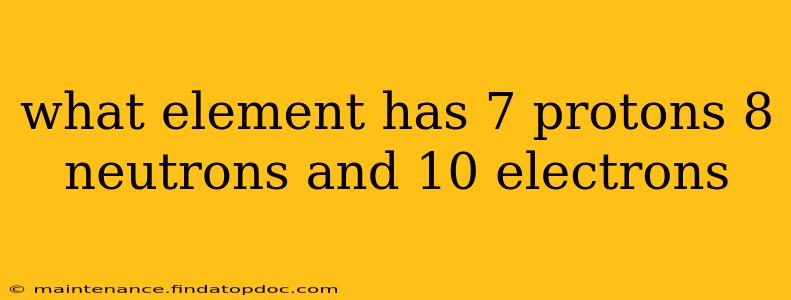What Element Has 7 Protons, 8 Neutrons, and 10 Electrons?
The number of protons in an atom's nucleus defines its element. An atom with 7 protons is always nitrogen (N). However, the numbers of neutrons and electrons provide additional information about the specific isotope and ion of that nitrogen atom.
Let's break down each component:
Protons:
- 7 protons: This definitively identifies the element as nitrogen. The periodic table organizes elements by their atomic number, which is equal to the number of protons.
Neutrons:
- 8 neutrons: This indicates the isotope of nitrogen. Isotopes are atoms of the same element with different numbers of neutrons. Nitrogen-15 (¹⁵N) is a stable isotope of nitrogen with 7 protons and 8 neutrons (7 + 8 = 15). The most common isotope is Nitrogen-14 (¹⁴N), which has 7 protons and 7 neutrons.
Electrons:
- 10 electrons: A neutral nitrogen atom would have 7 electrons (equal to the number of protons). However, this atom has 10 electrons, meaning it has a net charge of -3. This makes it a nitrogen anion, specifically a nitride ion (N³⁻).
In summary: The description points to a nitrogen-15 atom that has gained three electrons, resulting in a nitride ion (N³⁻). While the isotope is specified as Nitrogen-15 due to the number of neutrons, the defining characteristic of the species is its negative three charge. It's crucial to understand the difference between an element (determined by protons), its isotope (determined by protons and neutrons), and its ion (determined by the number of electrons relative to protons).
